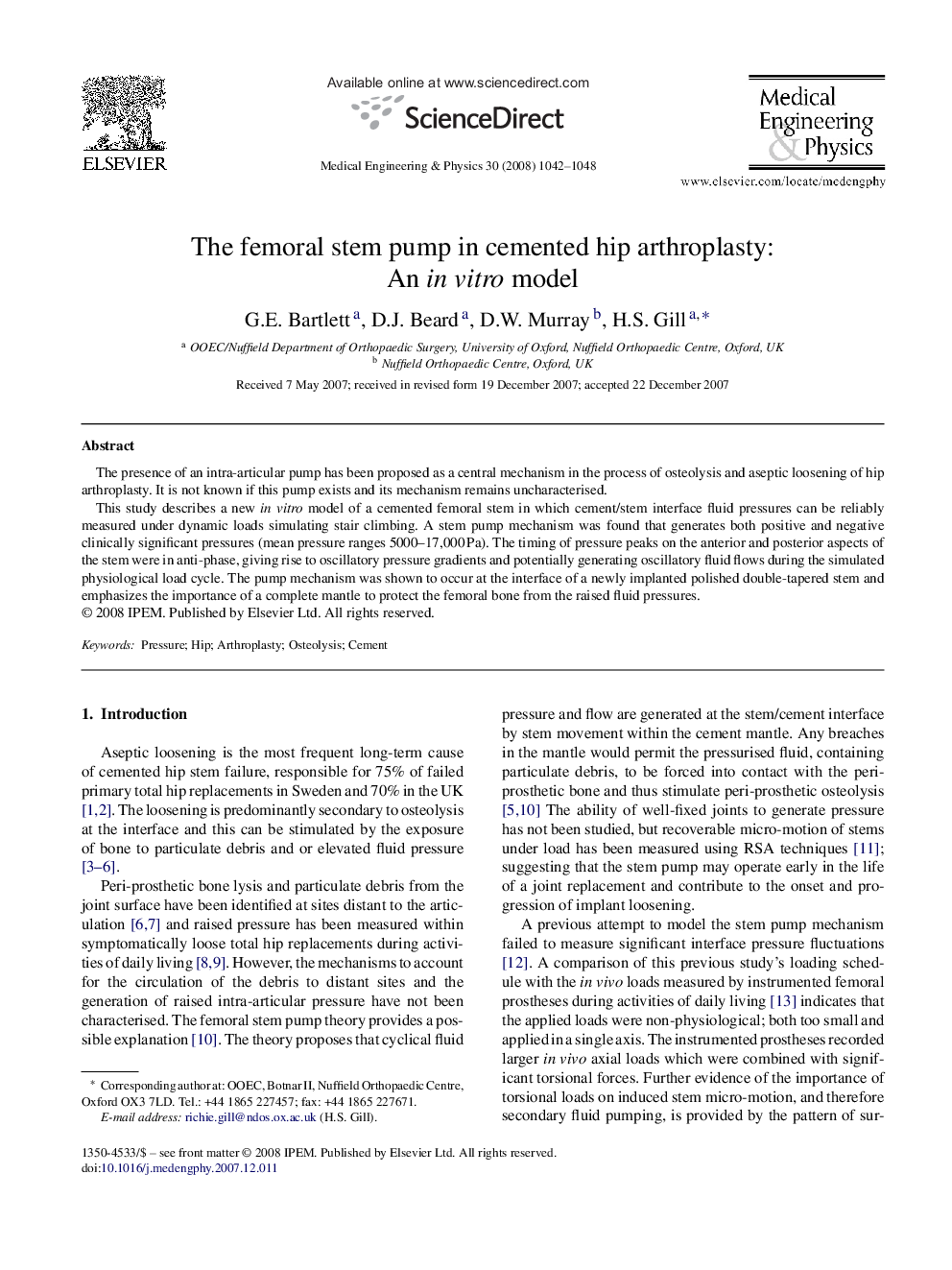| Article ID | Journal | Published Year | Pages | File Type |
|---|---|---|---|---|
| 877154 | Medical Engineering & Physics | 2008 | 7 Pages |
Abstract
This study describes a new in vitro model of a cemented femoral stem in which cement/stem interface fluid pressures can be reliably measured under dynamic loads simulating stair climbing. A stem pump mechanism was found that generates both positive and negative clinically significant pressures (mean pressure ranges 5000-17,000Â Pa). The timing of pressure peaks on the anterior and posterior aspects of the stem were in anti-phase, giving rise to oscillatory pressure gradients and potentially generating oscillatory fluid flows during the simulated physiological load cycle. The pump mechanism was shown to occur at the interface of a newly implanted polished double-tapered stem and emphasizes the importance of a complete mantle to protect the femoral bone from the raised fluid pressures.
Related Topics
Physical Sciences and Engineering
Engineering
Biomedical Engineering
Authors
G.E. Bartlett, D.J. Beard, D.W. Murray, H.S. Gill,
